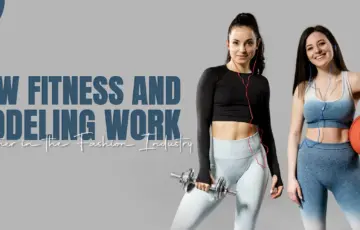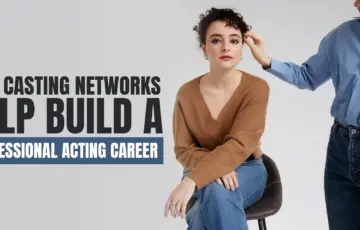The world of fashion can be dazzling and full of opportunity. When a teenager expresses a desire to step into it as a model, it’s a moment filled with both excitement and a healthy dose of apprehension for any parent. Seeing your child on a billboard or in a magazine is thrilling, but questions about safety, legitimacy, and overall well-being quickly come to the forefront. How do you protect them? How do you know which opportunities are real? How do you support their dream without sacrificing their childhood?
Here at Dazzlerr, we are deeply immersed in the fashion industry and believe in nurturing new talent in a positive and informed way. This comprehensive guide is written for you, the parents. It’s designed to demystify the modeling industry for you and your aspiring model, providing a realistic roadmap to help you navigate this journey together, safely and successfully. We want to empower you with the knowledge to become your teen’s best advocate.
Is Your Teen Ready for Modeling? A Realistic Assessment
Before you even think about headshots or agencies, the first and most crucial step is an honest conversation and assessment. The life of a teenage model isn’t just about glamorous photoshoots; it demands a specific temperament and a strong support system.
Beyond the Look: Key Traits of a Successful Teen Model
While physical attributes are part of the equation, agencies and clients look for much more. A successful young model possesses unique inner strengths that allow them to thrive under pressure.
- Resilience and Thick Skin: Rejection is a constant in the modeling industry. Models hear “no” far more often than “yes.” A teen must have the emotional maturity to understand that rejection is not personal and to bounce back from disappointment without it affecting their self-worth.
- Professionalism and Work Ethic: This is a job. It means being on time, listening to directions from photographers and stylists, being respectful to everyone on set, and maintaining a positive attitude, even during long and tiring days.
- Patience: The path to starting modeling is rarely a fast track. It involves a lot of waiting—waiting for agency responses, waiting at model casting events, and waiting for photos. Patience is an essential virtue.
- Passion and Genuine Interest: Does your teen love the creative process, fashion, and performance art? Or is the interest fleeting? A genuine passion for the craft will fuel their determination through the less glamorous parts of the job.
The Parents’ Role: More Than Just a Chauffeur
As a parent of a teenage model, you will wear many hats. Your active involvement is non-negotiable and is the single most crucial factor in ensuring teen model safety. Your roles will include:
- Chaperone: You must accompany your teen to all photoshoots, go-sees, and meetings.
- Administrator: You’ll manage schedules, respond to emails, and keep track of appointments.
- Financial Manager: You must understand the costs involved and manage any income your teen earns.
- Chief Supporter: You are their emotional rock, there to celebrate the wins and provide comfort after the setbacks. Parent support for models is crucial.
A Note on Teen Mental Health and Body Image
The fashion industry has historically placed a strong emphasis on specific body types. While the industry is becoming more inclusive, the pressure is still very real. It is vital to have open conversations with your teen about maintaining a healthy body image, positive self-esteem, and overall mental well-being. Ensure they understand that their appearance or measurements do not define their worth. Building confidence outside of modeling is key to a healthy experience within it. If at any point the experience negatively impacts their mental health, it’s crucial to be ready to step back.
Navigating the Modeling Industry: The First Steps
Once you feel your teen is ready, it’s time to take practical steps. Knowledge and caution are your best allies in learning how to become a teen model.
Understanding the Different Types of Teen Modeling
- Commercial Modeling: This is the largest market. Commercial modeling focuses on relatable, friendly faces to advertise a massive range of products and services in print ads, catalogs, and TV commercials. It is generally more inclusive of different heights and body types.
- Runway Modeling (or Catwalk): This is the high-fashion world of walking in designer shows. Runway modeling typically has stringent height and measurement requirements (usually 5’9″ and taller for females, 6’0″ and taller for males).
- Print Modeling (Editorial): This involves posing for fashion magazines. While often linked to the runway, editorial work can sometimes offer more flexibility for unique and expressive looks. This is the goal for many fashion models.
- Fit Modeling: This is a behind-the-scenes job where models with specific, standard measurements are used by designers to ensure clothing fits correctly before production.
The Essential First Tool: The Model Portfolio
To get started, you do not need to spend thousands of dollars on a professional model portfolio. Legitimate modeling agencies want to see your teen’s natural potential.
What are Headshots and Bodyshots?
A starter portfolio only needs a few key photos. Headshots for models are simple photos from the shoulders up, showing their face clearly. A headshot should be straightforward: one smiling, one not smiling. Bodyshots are full-length photos that show their physique and posture.
Professional Photos vs. Natural Snapshots (Polaroids)
- What to Wear: A simple, form-fitting outfit like a plain t-shirt, jeans, or swimsuit.
- Hair & Makeup: Hair should be clean and pulled back from the face. No makeup is best.
- Lighting & Background: Take the photos in natural daylight against a plain, neutral background (like a white or grey wall).
- No Posing: The poses should be simple: front, side profile, and back.
You need only submit these natural snapshots to agencies. If an agency is interested, it will guide you through the next steps for professional photos.
Finding Legitimate Modeling Agencies
This is the most critical and daunting step for modeling for teens parents. You aim to find professional representation and avoid the many modeling scams targeting hopefuls.
Red Flags: How to Spot Modeling Scams
- Upfront Fees: If an “agency” asks for money for signing, representation, or a website portfolio, it is almost certainly a scam.
- Pressure to Use Their Photographer: Reputable agencies will provide a list of recommended photographers, but never force you to use one specific person.
- Guarantees of Fame and Fortune: No one can promise stardom. Legitimate agents are realistic and professional, not salespeople making grand promises.
- “Modeling Schools” or “Talent Conventions”: While some can be legitimate, many are businesses designed to sell expensive classes and packages with little chance of leading to actual work. Do extensive research.
Researching Reputable Agencies
- Start with a Search: Look for “modeling agencies for teens” in your nearest major city.
- Check Their Website: Do they have a professional website with a clear roster of working models? Do they list their submission guidelines?
- Look for Affiliations: Are they affiliated with any professional organizations?
- Check Social Media: A reputable agency will have a professional presence showcasing their models’ work.
- Open Casting Calls: Many agencies hold open casting calls where you can meet them in person. Check their websites for dates and requirements.
The Casting and Audition Process
What is a Model Casting or Go-See?
A model casting is a brief audition where a client (a brand, designer, or advertising agency) meets several models sent by different agencies to choose the right face for their project. Your teen may attend many go-sees for every job they book.
Preparing for the Audition: What to Bring and How to Act
- Their Portfolio: A professional book of their best photos (which the agency will have helped them develop).
- A “Model Bag”: This might include shoes, simple clothing options, and any necessary makeup for touch-ups.
- A Positive Attitude: They should be polite, confident, and able to take direction well during the brief meeting.
Handling Rejection: A Vital Skill for Young Models
The reality is that your teen will face rejection constantly. They might be too tall or short, not the right “look,” or the client may have a different vision. It’s essential to reinforce that this is a business decision, not a reflection of their worth. This resilience is a core part of model training and development.
The Business Side of Teen Modeling
Understanding Contracts and Agreements
- Read it Carefully: Understand the terms, the commission rate, the length of the contract, and the exit clauses.
- Seek Legal Advice: It is always wise to have an entertainment lawyer review any contract before you sign it. This is a standard and smart business practice.
Financial Realities: Costs vs. Potential Earnings
- Initial Costs: Professional photos (a few hundred to over a thousand dollars), composite cards (the model’s “business card”), and travel are everyday expenses.
- Inconsistent Income: Working for a teenage model can be sporadic. There may be busy months followed by quiet periods. It is not a stable or predictable income source.
Education and Modeling: Striking a Balance
Education must always come first. This is non-negotiable. Discuss with your teen how they will balance schoolwork with potential modeling jobs. This may mean only being available for jobs after school, on weekends, or during school holidays. A good agency will understand and respect that a teen’s education is the top priority.
Dazzlerr’s Commitment to Nurturing Young Talent
At Dazzlerr, we believe the fashion industry is at its best when it responsibly discovers and supports talent. We see platforms like ours as part of a healthy ecosystem that provides information and celebrates creativity. A well-informed start is the best foundation for any aspiring model. We encourage parents and teens to use resources like this guide to educate themselves, fostering a generation of models who are not only talented but also empowered, confident, and well-supported on their journey.
Conclusion: A Partnership for a Positive Journey
Embarking on a journey into teen modeling is a significant commitment for both the child and the parent. It is a true partnership. By prioritizing teen model safety, managing expectations, insisting on professionalism, and providing unwavering emotional support, you can make this a positive and rewarding experience.
The key is to remember that you are your child’s number one advocate. Arm yourself with knowledge, trust your instincts, and never be afraid to ask questions or say no. With the right approach, you can help your teen explore their passion for the modeling industry while ensuring they have a happy, healthy, and balanced life.














